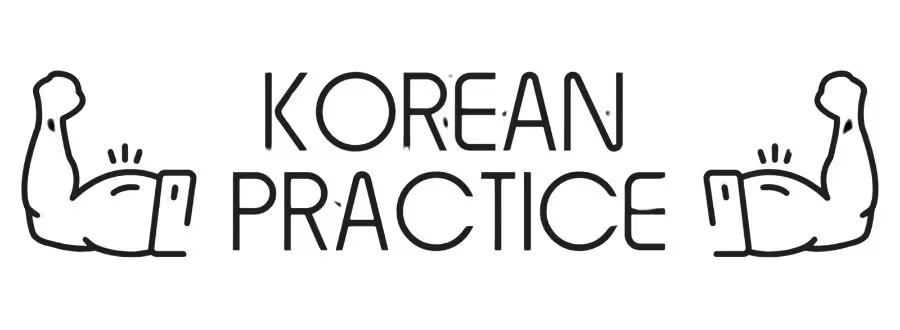Introduction
When it comes to learning a new language like Korean, expanding your vocabulary is essential, especially when it comes to understanding everyday items found in Korean living rooms.
In this article, we will explore Korean household items vocabulary, providing you with a comprehensive guide to the commonly used objects you may encounter in Korean living rooms.
Living Room Items
In Korean households, the living room design plays a crucial role in creating a warm and inviting atmosphere. It serves as a central gathering space for family members and guests to come together. Here are some commonly found items that contribute to the overall ambiance and aesthetic of Korean living room design:
Sofa
The Korean living room is incomplete without a sofa, or “소파” (sopa) in Korean. This essential piece of furniture provides comfortable seating for family members and guests. It serves as the focal point of comfort and togetherness, perfect for relaxation, conversations, and hosting gatherings.
With its stylish design and plush cushions, the sofa creates an inviting atmosphere where cherished memories are made in the heart of the Korean living room.
소파에 앉아 편안하게 쉬었다. (sopae anja pyeonanhage swieotdda) – I sat on the sofa and rested comfortably.
소파에 앉아 편안하게 쉬었다.
소파에 (so-pa-e) 앉아 (an-ja) 편안하게 (pyeo-nan-ha-ge) 쉬었다 (swi-eot-dda).
소파 (sofa) 에 (on) 앉 (to sit) 아 (and) 편안하 (to be comfortable) 게 (ly) 쉬 (to rest) 었 (past tense) 다 (I am talking to myself).
I sat on the sofa and rested comfortably.
Lit. (I) sit on sofa and rested comfortably.

Coffee Table
In the Korean living room, the coffee table, or “커피 테이블” (keopi teibeul) in Korean, takes its place in front of the sofa. It serves as a convenient surface for beverages, snacks, and various items. Whether enjoying traditional Korean tea with friends or indulging in treats while watching a Korean drama, the coffee table provides a functional and accessible space within arm’s reach.
With its practical design and stylish aesthetics, the Korean living room coffee table enhances functionality and adds visual appeal, making it a valuable addition to the room’s ambiance.
커피 테이블 위에 신문을 놓았어요. (keopi teibeul wie sinmuneul noatsseoyo) – I placed the newspaper on the coffee table.
커피 테이블 위에 신문을 놓았어요.
커피 (keo-pi) 테이블 (te-i-beul) 위에 (wi-e) 신문을 (sin-mu-neul) 놓았어요 (no-at-sseo-yo).
커피 (coffee) 테이블 (table) 위에 (on) 신문 (newspaper) 을 (my object is the newspaper) 놓 (to place) 았 (past tense) 어요 (I’m telling you polite and friendly).
I placed the newspaper on the coffee table.
Lit. (I) placed newspaper on coffee table.
Television
In the Korean living room, the television, or “텔레비전” (tellebijeon) in Korean, takes center stage as a common source of entertainment. It brings family members together to enjoy shows, movies, and digital content, creating a hub of shared experiences.
Whether it’s a thrilling K-drama, cheering for sports teams, or movie nights, the television in the Korean living room serves as a window to entertainment, fostering moments of joy, laughter, and relaxation for everyone present.
텔레비전을 시청하면서 한국어 실력을 향상시킬 수 있어요. (tellebijeoneul sicheonghamyeonseo hangugeo silryeogeul hyangsangsikil su itsseoyo) – You can improve your Korean skills while watching television.
텔레비전을 시청하면서 한국어 실력을 향상시킬 수 있어요.
텔레비전을 (tel-le-bi-jeo-neul) 시청하면서 (si-cheong-ha-myeon-seo) 한국어 (han-gu-geo) 실력을 (sil-ryeo-geul) 향상시킬 (hyang-sang-si-kil) 수 (su) 있어요 (it-sseo-yo).
텔레비전 (television) 을 (my object is television) 시청하 (to watch (movie, TV)) 면서 (while) 한국어 (Korean) 실력 (skill) 을 (my object is Korean skill) 향상시키 (to improve) ㄹ 수 있 (can) 어요 (I’m telling you polite and friendly). * 향상시키 + ㄹ = 향상시킬
You can improve your Korean skills while watching television.
Lit. (You) can improve Korean skill while watching television.
Television Stand
In the Korean living room, a TV stand, known as “티비 선반” (tibi seonban) in Korean, holds the television and provides space for media devices. It ensures stability, organization, and easy access. With well-designed compartments and shelves, it manages cables and stores DVDs, gaming consoles, and remote controls.
The TV stand in the Korean living room combines functionality with style, enhancing the aesthetic appeal and creating a harmonious, clutter-free entertainment space.
이 티비 선반은 내 방에 잘 어울려요. (i tibi seonbaneun nae bange jal eoulryeoyo) – This television stand goes well with my room.
이 티비 선반은 내 방에 잘 어울려요.
이 (i) 티비 (ti-bi) 선반은 (seon-ba-neun) 내 (nae) 방에 (bang-e) 잘 (jal) 어울려요 (eo-ul-ryeo-yo).
이 (this) 티비 (TV) 선반 (shelf) 은 (my topic is this television stand) 내 (my) 방 (room) 에 (to) 잘 (well) 어울리 (to match) 어요 (I’m telling you polite and friendly). * 어울리 + 어요 = 어울려요
This television stand goes well with my room.
Lit. This TV shelf match well to my room.
Bookshelf
In the Korean living room, the bookshelf, or “책장” (chaekjang) in Korean, serves as a storage unit for books and decorative items. It adds sophistication to the ambiance while organizing reading materials. With carefully arranged shelves, it becomes a focal point for literary enthusiasts, showcasing knowledge, imagination, and cultural treasures.
The bookshelf provides easy access to books, encouraging reflection and intellectual engagement in the cozy Korean living room. It can also be adorned with decorative items, enhancing visual appeal and personalization of the space.
책장 위에는 그림과 장식품들이 있어요. (chaekjjang wieneun geurimgwa jangsikpumdeuri itsseoyo) – There are pictures and decorations on the bookshelf.
책장 위에는 그림과 장식품들이 있어요.
책장 (chaek-jjang) 위에는 (wi-e-neun) 그림과 (geu-rim-gwa) 장식품들이 (jang-sik-pum-deu-ri) 있어요 (it-sseo-yo).
책장(bookshelf) 위에 (on) 는 (my topic is on the bookshelf) 그림 (picture) 과 (and) 장식품 (decoration) 들 (s) 이 (my subject is pictures and decorations) 있 (there are) 어요 (I’m telling you polite and friendly).
There are pictures and decorations on the bookshelf.
Lit. There are picture and decorations on bookshelf.
Floor Lamp
In the Korean living room, the floor lamp, or “스탠딩 램프” (seutaending raempeu) in Korean, provides additional lighting and enhances the ambiance. This tall and elegant lamp serves a functional purpose while creating a cozy atmosphere for relaxation and leisurely activities.
With its adjustable brightness, it offers ideal lighting conditions for reading, conversations, or quiet moments. Moreover, the floor lamp adds sophistication and style to the Korean living room, with its sleek design and carefully chosen materials.
침실에 흰색 스탠딩 램프를 설치했어요. (chimsire hinsaek seutaending raempeureul seolchihaetsseoyo) – I installed a white floor lamp in the bedroom.
침실에 흰색 스탠딩 램프를 설치했어요.
침실에 (chim-si-re) 흰색 (hin-saek) 스탠딩 (seu-taen-ding) 램프를 (raem-peu-reul) 설치했어요 (seol-chi-haet-sseo-yo).
침실 (bedroom) 에 (in) 흰색 (white) 스탠딩 (standing) 램프 (lamp) 를 (my object is a white standing lamp) 설치하 (to install) ㅆ (past tense) 어요 (I’m telling you polite and friendly). 설치하 -> 설치해, 설치해 + ㅆ = 설치했
I installed a white floor lamp in the bedroom.
Lit. (I) installed white standing lamp in bedroom.
Wall Art
In the Korean living room, wall art, or “벽 장식” (byeok jangsig) in Korean, adds personality and visual interest. It includes paintings, posters, photographs, and captivating pieces displayed on the walls.
The wall art reflects individual taste and cultural appreciation, showcasing a range of styles from traditional Korean to contemporary prints. It sparks conversations and creates a visually stimulating environment, contributing to the harmonious ambiance of the Korean living room.
나는 추상적인 벽 장식을 선호합니다. (naneun chusangjeogin byeokjangsigeul seohohamnida) – I prefer abstract wall art.
나는 추상적인 벽 장식을 선호합니다.
나는 (na-neun) 추상적인 (chu-sang-jeo-gin) 벽 (byeok) 장식을 (jang-si-geul) 선호합니다 (seon-ho-ham-ni-da).
나 (I) 는 (my topic is myself) 추상적인 (abstract) 벽 (wall) 장식 (decoration) 을 (my object is wall art) 선호하 (to prefer) ㅂ니다 (I’m telling you in a polite and formal way). * 선호하 + ㅂ니다 = 선호합니다
I prefer abstract wall art.
LIt. I prefer abstract wall decoration.
Throw Pillows
Throw pillows, or “쿠션” (kusyeon) in Korean, are a popular addition to the Korean living room. Placed on sofas and armchairs, they provide comfort and enhance aesthetics. With various colors, patterns, and sizes available, throw pillows allow for personalization and style, expressing individual taste.
Whether it’s a vibrant pillow that complements the room’s color scheme or a patterned cushion for visual interest, these accents contribute to a cozy and inviting atmosphere in the Korean living room, making it a comfortable and visually appealing space for relaxation and gatherings.
이 쿠션은 무늬가 아주 예쁘죠? (i kusyeoneun munuiga aju yebbeujyo) – Isn’t this throw pillow pattern very pretty?
이 쿠션은 무늬가 아주 예쁘죠?
이 (i) 쿠션은 (kusyeoneun) 무늬가 (mu-nui-ga) 아주 (a-ju) 예쁘죠 (ye-bbeu-jyo)?
이 (this) 쿠션 (cushion) 은 (as for this cushion) 무늬 (pattern) 가 (my subject is pattern) 아주 (very) 예쁘 (to be pretty) 죠 (isn’t; in a polite and friendly way)?
Isn’t this throw pillow pattern very pretty?
Lit. Isn’t pattern very pretty as for this throw pillow?
Curtain
The curtain, or “커튼” (keoteun), is a fabric covering for windows, providing privacy, light control, and decorative accents to the Korean living room.
커튼을 골라서 창문에 걸어 보세요. (keoteuneul gollaseo changmune georeoboseyo) – Choose curtains and hang them on the window.
커튼을 골라서 창문에 걸어보세요.
커튼을 (keo-teu-neul) 골라서 (gol-la-seo) 창문에 (chang-mu-ne) 걸어 (geo-reo) 보세요 (bo-se-yo).
커튼 (curtain) 을 (my object is curtains) 고르 (to choose) 아서 (and then) 창문 (window) 에 (on) 걸 (to hang) 어 보 (to try) 세요 (I suggest you politely). * 고르 + 아서 = 골라서
Choose curtains and hang them on the window.
Lit. Try to choose curtain and then hang on window.
Wall Clock
The wall clock, or “벽시계” (byeok sigye), is a timekeeping device mounted on the wall, enhancing both the functional and decorative aspects of the Korean living room.
이 벽시계는 아주 조용하게 움직여요. (i byeoksigyeneun aju joyonghage umjigyeoyo) – This wall clock moves very quietly.
이 벽시계는 아주 조용하게 움직여요.
이 (i) 벽시계는 (byeok-si-gye-neun) 아주 (a-ju) 조용하게 (jo-yong-ha-ge) 움직여요 (um-ji-gyeo-yo).
이 (this) 벽 (wall) 시계 (clock) 는 (my topic is this wall clock) 아주 (very) 조용하 (to be quiet) 게 (ly) 움직이 (to move) 어요 (I’m telling you polite and friendly). * 움직이 + 어요 = 움직여요
This wall clock moves very quietly.
Lit. This wall clock move very quietly.
Wall Shelves
Wall shelves, or “벽 선반” (byeok seonban), are shelves mounted on the wall to display decorative items, books, or personal mementos, elevating the aesthetic appeal of the Korean living room while maximizing vertical space.
벽 선반을 선택할 때는 색상과 스타일을 고려해야 해요. (byeok seonbaneul seontaekkalttaeneun saekssanggwa seutaireul goryeohaeya haeyo) – When choosing wall shelves, you should consider the color and style.
벽 선반을 선택할 때는 색상과 스타일을 고려해야 해요.
벽 (byeok) 선반을 (seon-ba-neul) 선택할 (seon-taek-kal) 때는 (ttae-neun) 색상과 (saek-ssang-gwa) 스타일을 (seu-ta-i-reul) 고려해야 (go-ryeo-hae-ya) 해요 (hae-yo).
벽 (wall) 선반 (shelf) 을 (my object is wall shelves) 선택하 (to choose) ㄹ 때 (when) 는 (my topic is when choosing wall shelves) 색상 (color) 과 (and) 스타일 (style) 을 (my object is the color and style) 고려하 (to consider) 해야 해요 (should; in a polite and friendly way). * 고려하 -> 고려해
When choosing wall shelves, you should consider the color and style.
Lit. When choosing wall shelf, (you) should consider color and style.
Fireplace
The fireplace, or “벽난로” (byeoknanro), is not a feature commonly found in traditional Korean homes. However, it can also be incorporated into a modern design, still providing functional and aesthetic benefits.

Image by Freepik
저녁에 벽 난로를 켜고 가족들과 함께 시간을 보내요. (jeonyeoge byeok nanroreul kyeogo gajokdeulgwa hamgge siganeul bonaeyo) – In the evening, we turn on the fireplace and spend time with family.
저녁에 벽 난로를 켜고 가족들과 함께 시간을 보내요.
저녁에 (jeo-nyeo-ge) 벽 (byeok) 난로를 (nan-ro-reul) 켜고 (kyeo-go) 가족들과 (ga-jok-deul-gwa) 함께 (ham-gge) 시간을 (si-ga-neul) 보내요 (bo-nae-yo).
저녁 (evening) 에 (in) 벽 (wall) 난로 (stove) 를 (my object is the fireplace) 켜 (to turn on) 고 (and) 가족 (family) 들 (s) 과 (with) 함께 (together) 시간 (time) 을 (my object is time) 보내 (to spend) 요 (I’m telling you polite and friendly).
In the evening, we turn on the fireplace and spend time with family.
Lit. In evening, (we) turn on wall stove and spend time together with families.
Conclusion
In conclusion, this article has provided you with a comprehensive guide to Korean household items vocabulary. By familiarizing yourself with these commonly used objects in Korean homes, you can enhance your language skills and gain a deeper understanding of Korean culture. Remember to practice using these words in context to reinforce your learning. Whether you’re decorating a traditional Korean living room or opting for a more contemporary style, happy exploring!







